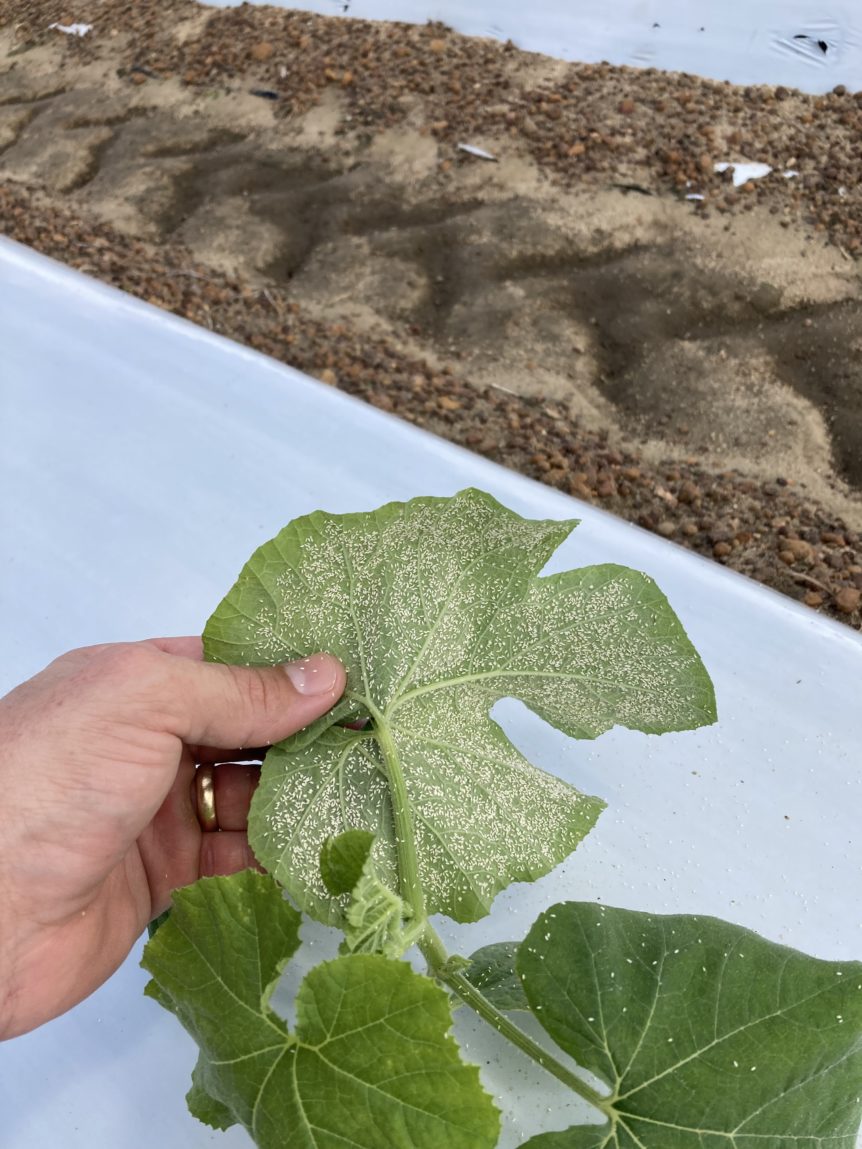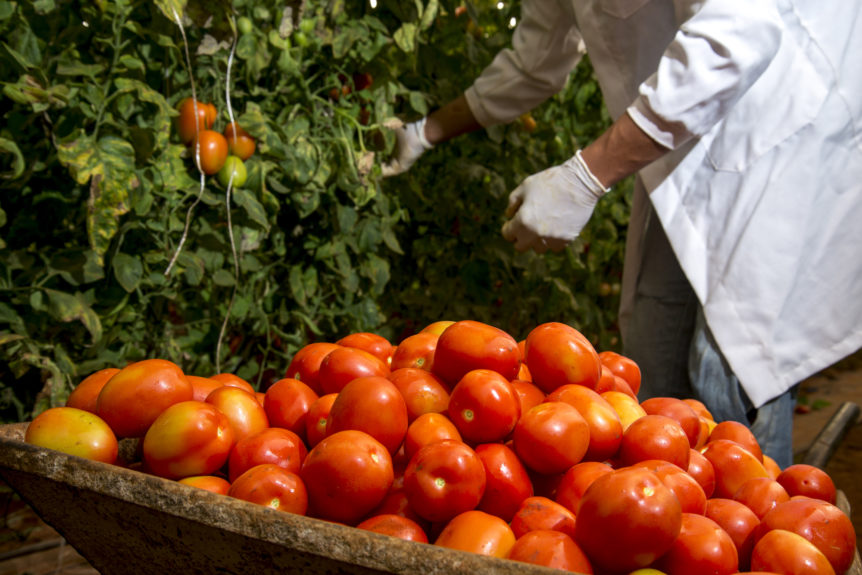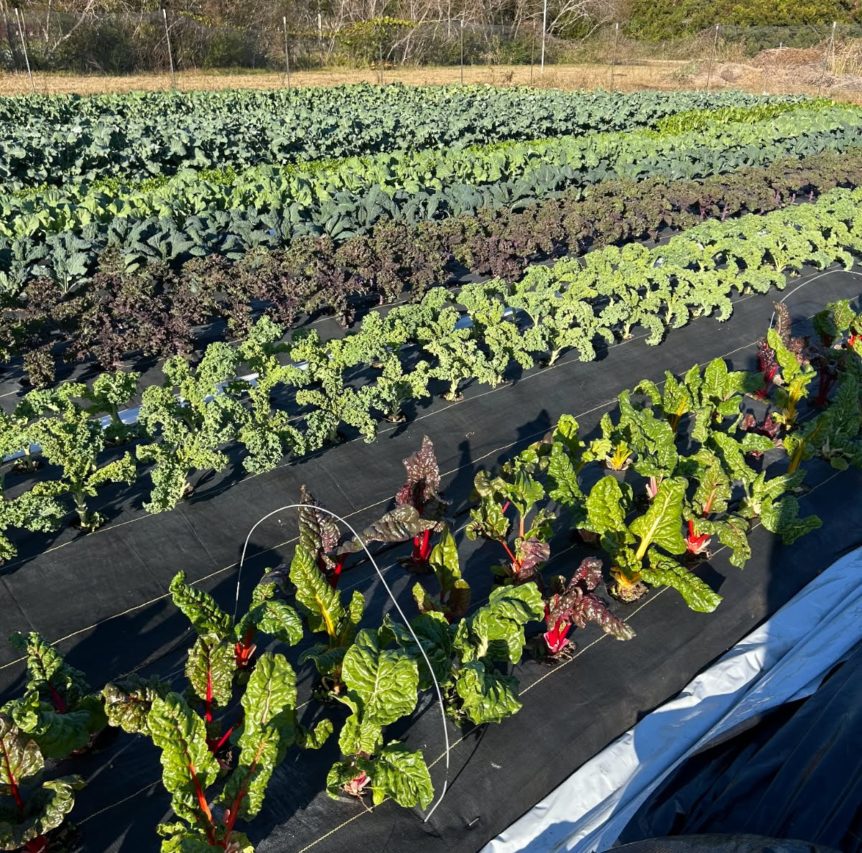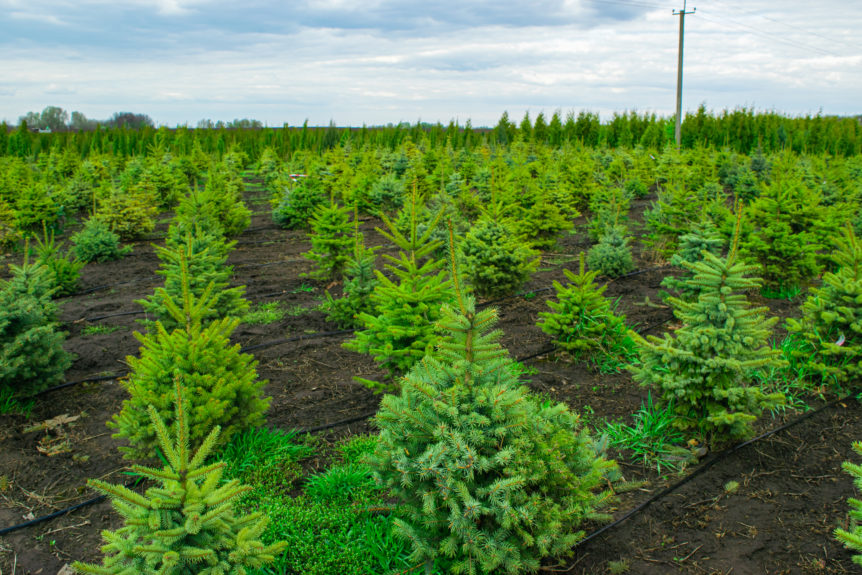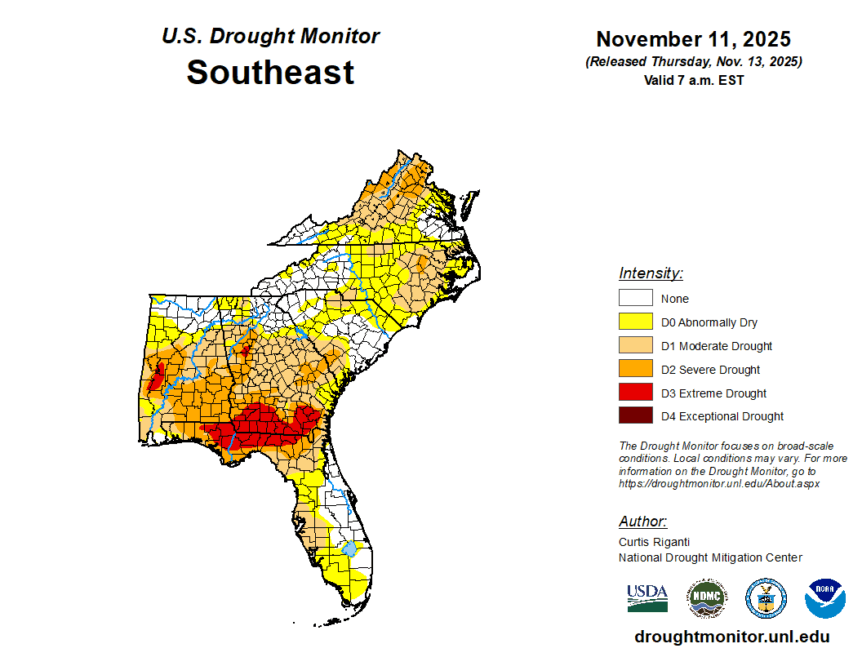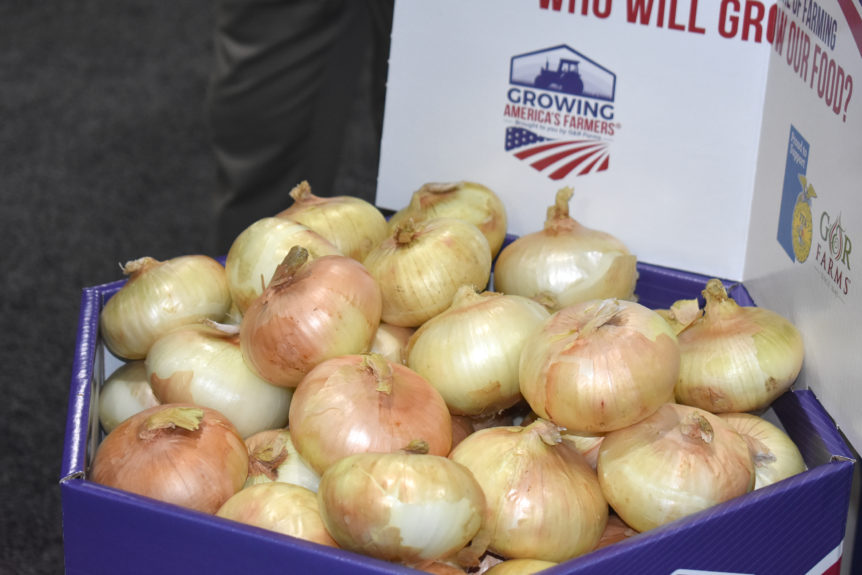By Clint Thompson It’s the middle of November which means it’s Christmas tree season for Alabama farms and holiday enthusiasts. For one Christmas tree farm, they expect to see a continued trend of bigger trees get sold this holiday season. Steve Mannhard, with Fish River Farms in Baldwin County, Alabama, talked about the trend of shopping for trees that are …
Whitefly Update in Georgia’s Fall Vegetables
By Clint Thompson Whitefly infestations are normally a problem for Georgia’s fall vegetable production. While they were noticeable this fall season, they weren’t as high as in recent years, says Stormy Sparks, University of Georgia Extension vegetable entomologist. “I don’t think the populations were as high. We always get high populations late in the year, but they didn’t show up …
N.C. State Extension Agent Emphasizes Food Safety
By Clint Thompson Food safety should remain at the forefront of minds of fruit and vegetable producers. That’s a point of emphasis for Elena Rogers, N.C. State Extension Area Specialized Agent in fresh produce food safety. She believes growers should acclimate themselves to the dangers posed by food-borne illnesses so the risks can be mitigated on the farm and at …
Trump Administration Delivers Second Stage of Crop Disaster Assistance for Farmers
(Washington, D.C.) – President Donald J. Trump and U.S. Secretary of Agriculture Brooke L. Rollins continue to put Farmers First. On Monday, the U.S. Department of Agriculture (USDA) continued to support farmers and will release billions of dollars in disaster assistance for those recovering from natural disasters across the country. “President Trump continues to put Farmers First and provide relief to …
Clemson Extension Agents Provide Weekly Crop Updates
Clemson Extension agents provide updates in The South Carolina Grower this week about the status of various crops being produced throughout the state. Coastal Region Zack Snipes Midlands Rob Last Daniel Lyon Upstate Andy Rollins
Christmas Come Early: Tree Farms Sell Out Quickly
By Clint Thompson Christmas season starts earlier and earlier. No longer are people waiting until after Thanksgiving to decorate their homes for Christmas. And as we saw this year, no longer are some stores waiting until November to offer Christmas lights and decorations for sale. That mindset can also be seen on Christmas tree farms as well. While Thanksgiving Day …
Updated Drought Conditions Across Southeast
The southern part of the Southeast region is experiencing the driest conditions, according to the Nov. 13 release of the U.S. Drought Monitor. Extreme drought conditions are seen across South Georgia and North Florida, while severe drought is seen in the southeastern part of Alabama. South Georgia’s driest conditions start in Seminole and Early counties, expand eastward to Brantley and …
GFVGA Issues Letter to USTR
By Clint Thompson The Georgia Fruit and Vegetable Growers Association (GFVGA) submitted a letter to the Office of the U.S. Trade Representative (USTR) amid the USMCA review. It highlighted the continued surge of imported fruits and vegetables into the U.S. “We encourage you to consider any trade policies that will protect U.S. fruit and vegetable growers from unfair foreign competitors, …
Cold-Hardy Citrus Spared From Sub-Freezing Temperatures
The short timeframe when temperatures dipped below freezing this week in the cold-hardy citrus region appears to have not been problematic for trees. That’s the preliminary assessment shared by Mary Sutton, University of Georgia (UGA) assistant professor and citrus Extension specialist. Sutton emphasized that the few hours that temperatures dropped into the 20s early Tuesday morning was a lot better …
Dry Conditions Benefit Vidalia Onion Seedbeds
By Clint Thompson Vidalia onion transplanting is either underway or about to be across Southeast Georgia, according to Chris Tyson, University of Georgia (UGA) Extension area onion agent. Tyson said the prolonged dry spell this fall has allowed seedbeds to avoid disease buildup, a common concern if rains were persistent. “All of our seedbeds that we’re growing right now for …











